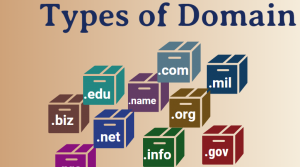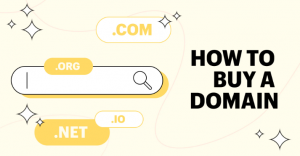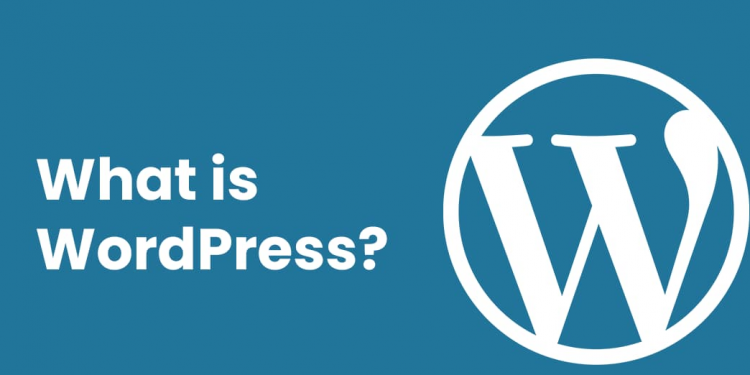What is WordPress?
WordPress is a popular open-source content management system (CMS) used for creating websites and blogs. It is written in PHP and backed by a MySQL or Maria DB database, and it provides a user-friendly interface for managing website content without requiring coding knowledge.
WordPress allows users to create and customize websites with themes, which are templates that determine the appearance of the website, and plugins, which are add-ons that extend the functionality of the site. It offers a wide range of features, including a built-in editor for creating and managing content, media management for uploading and organizing images, videos, and other files, and a system for managing users and their roles.
WordPress is known for its flexibility, scalability, and ease of use, making it a popular choice for websites of all sizes, from simple blogs to complex e-commerce sites and enterprise-level websites. It also has a large and active community of developers, designers, and users who contribute to its development, create themes and plugins, and provide support through forums and other resources.

What is a Domain?
A domain is a unique, human-readable web address that represents an Internet Protocol (IP) address associated with a website or an online resource. It serves as a way to identify and locate websites on the internet. Domains are used in URLs (Uniform Resource Locators) to access websites in a user-friendly manner.
A domain consists of two or more parts separated by periods (dots). The rightmost part of the domain, known as the top-level domain (TLD), represents the highest level of the domain hierarchy and typically indicates the type of organization or country associated with the website. Examples of TLDs include .com (for commercial websites), .org (for non-profit organizations), .gov (for government websites), .edu (for educational institutions), .net (for network-related websites), and many others.
The leftmost part of the domain, known as the second-level domain (SLD), is typically chosen by the website owner and reflects the brand name, organization name, or other relevant term associated with the website. For example, in the domain “example.com,” “example” is the SLD.
Domains are registered with domain registrars, which are accredited organizations that manage the reservation and registration of domain names. Once a domain is registered, it is owned by the registrant for a specified period of time, typically ranging from one to ten years, and can be renewed before it expires to maintain ownership. Domains can be used for websites, email addresses, and other online resources, and they can be transferred to different registrars or owners if needed.

What are the different types of domain?
There are several types of domains, categorized based on their purpose, function, or geographic location. Some of the common types of domains include:
- Generic Top-Level Domains (gTLDs): These are the most common types of top-level domains and do not have any specific geographic or organizational association. Examples of gTLDs include .com, .org, .net, .info, .biz, .name, .pro, and .edu (which is restricted to educational institutions in the United States).
- Country Code Top-Level Domains (ccTLDs): These are top-level domains that are specifically associated with a particular country or geographic region. Examples of ccTLDs include .us (United States), .uk (United Kingdom), .ca (Canada), .au (Australia), .de (Germany), .fr (France), .jp (Japan), and many others. ccTLDs are often used by websites that are intended to serve a specific country or region.
- Sponsored Top-Level Domains (sTLDs): These are top-level domains that are sponsored by a particular organization or industry group and are intended for use by specific communities or industries. Examples of sTLDs include .gov (for U.S. government agencies), .mil (for U.S. military), .aero (for the aviation industry), .museum (for museums), .edu (for educational institutions in the United States), and .cat (for Catalan-speaking communities).
- New Generic Top-Level Domains (new gTLDs): These are top-level domains that were introduced in recent years as part of the expansion of the domain name system. Examples of new gTLDs include .blog, .shop, .app, .tech, .online, .guru, .xyz, .club, .media, and many others. These new gTLDs offer more specific and niche options for domain registration beyond the traditional gTLDs.
- Subdomains: These are domains that are created as a subdivision of another domain, using a prefix before the main domain name. For example, in the domain “blog.example.com,” “blog” is a subdomain of “example.com.” Subdomains are used to create separate sections or sub-sites within a larger website, and they can be used for various purposes, such as blogs, e-commerce stores, forums, or language-specific content.
These are some of the common types of domains. It’s important to note that the domain name system (DNS) is managed by various organizations and policies may vary, so it’s advisable to check with a domain registrar or relevant authority for specific rules and regulations related to domain registration and use.
How to choose a good domain?
Choosing a good domain is an important step in establishing an online presence for your website or online business. Here are some tips to help you choose a good domain:
- Make it relevant: Choose a domain that is relevant to your website’s content, purpose, or business name. It should give visitors an idea of what your website is about or what your business offers. A relevant domain can also help with search engine optimization (SEO) as it may contain keywords that users might search for.
- Keep it short and simple: Choose a domain that is short, easy to spell, and easy to remember. Avoid using long or complicated words, hyphens, or numbers that may confuse users. A short and simple domain is more likely to be memorable and shareable, which can help with branding and marketing efforts.
- Consider branding: Your domain is an important part of your brand identity. Choose a domain that aligns with your brand name or reflects your brand personality. A consistent and cohesive brand across your domain, website, and other online assets can help build brand recognition and trust.
- Avoid trademark issues: Make sure your domain does not infringe on any existing trademarks or copyrights. Conduct a thorough search to ensure that the domain you choose is not already in use by another business or individual to avoid legal issues in the future.
- Choose the right TLD: Consider the type of website or business you have and choose the appropriate top-level domain (TLD) that reflects it. For example, if you have a commercial website, a .com TLD is often recommended, as it is widely recognized and used. However, if you are targeting a specific geographic region, a country code top-level domain (ccTLD) may be more suitable.
- Plan for the future: Choose a domain that allows room for growth and expansion. Avoid using restrictive or too-niche domains that may limit your website’s potential to evolve in the future. Consider your long-term plans and choose a domain that can accommodate them.
- Check availability and price: Before finalizing your domain choice, check its availability with domain registrars to ensure it is not already taken. Also, consider the cost of domain registration and renewal fees, as prices may vary depending on the registrar and the type of domain you choose.
Choosing a good domain requires careful consideration of various factors, including relevance, simplicity, branding, legality, TLD, future growth, availability, and cost. Take your time to research and select a domain that represents your website or business effectively and helps you establish a strong online presence.

How to buy a domain?
Buying a domain involves several steps, which are outlined below:
- Choose a domain registrar: A domain registrar is a company that sells domain names and manages domain registrations. Choose a reputable domain registrar that is accredited by the Internet Corporation for Assigned Names and Numbers (ICANN) or a relevant authority in your country. Popular domain registrars include GoDaddy, Namecheap, Google Domains, and others.
- Search for domain availability: Use the domain registrar’s search function to check if the domain name you want is available. If the domain is already registered, you may need to choose a different domain name or try a different TLD or domain extension.
- Choose a domain name: If the domain name you want is available, select it and add it to your cart. Consider the tips mentioned earlier in this conversation to choose a good domain name that is relevant, short, memorable, and aligned with your brand or website’s purpose.
- Provide registration details: During the domain registration process, you will be asked to provide registration details, including your name, contact information, and payment method. Make sure to enter accurate and up-to-date information, as this information is used to register the domain and establish you as the domain owner.
- Choose registration period: Select the desired registration period for your domain. Domains are typically registered for a period of one to ten years, and you will need to renew the registration before it expires to retain ownership of the domain.
- Review and complete the purchase: Review your domain registration details, including the domain name, registration period, and contact information, to ensure they are correct. Proceed to complete the purchase by providing payment information and following the prompts provided by the domain registrar.
- Verify ownership: After purchasing the domain, you may receive an email from the domain registrar asking you to verify your ownership by clicking on a link or following instructions provided in the email. Follow the steps provided to complete the domain ownership verification process.
Once the domain registration is complete and ownership is verified, the domain is officially yours, and you can start using it for your website or online business. It’s important to note that domain registration is typically a recurring process, and you will need to renew your domain registration periodically to maintain ownership of the domain. Be sure to keep track of your domain’s expiration date and renew it in a timely manner to avoid losing your domain.
What are the different domain registrar?
There are several domain registrars available that offer domain registration services. Some of the popular domain registrars include:
- GoDaddy (www.godaddy.com): GoDaddy is one of the largest and most well-known domain registrars, offering a wide range of domain extensions and additional services such as website hosting, email hosting, website builders, and more.
- Namecheap (www.namecheap.com): Namecheap is a popular domain registrar known for its affordable prices and user-friendly interface. They offer a wide range of domain extensions and also provide hosting, SSL certificates, and other website-related services.
- Google Domains (domains.google.com): Google Domains is a domain registrar offered by Google, which provides a simple and intuitive platform for domain registration. They offer a wide range of domain extensions and also provide integration with other Google services such as G Suite for email and website building options.
- Domain com (www.domain.com): Domain.com is a domain registrar that offers a variety of domain extensions, along with website hosting, website builders, email services, and other website-related services.
- Bluehost (www.bluehost.com): Bluehost is a popular web hosting provider that also offers domain registration services. They offer a wide range of domain extensions and provide hosting, website builders, email services, and other website-related services.
- HostGator (www.hostgator.com): HostGator is another well-known web hosting provider that also offers domain registration services. They offer a variety of domain extensions and provide hosting, website builders, email services, and other website-related services.
- Name com (www.name.com): Name.com is a domain registrar that offers a wide range of domain extensions and provides additional services such as website hosting, email hosting, website builders, and more.
These are just a few examples of popular domain registrars, and there are many other domain registrars available in the market. When choosing a domain registrar, it’s important to consider factors such as pricing, ease of use, customer support, additional services offered, and reputation to make an informed decision.
What are the average price of buying a domain?
The price of buying a domain can vary depending on various factors, such as the domain registrar, the domain extension (TLD), the length of registration, and any additional services or features included with the domain. However, here are some average price ranges for domain registration:
- Common domain extensions (such as .com, .net, .org, .info): The average price for registering a common domain extension typically ranges from $10 to $20 per year. Some domain registrars may offer promotional prices or discounts for the first year of registration.
- Country-specific domain extensions (such as .us, .co.uk, .ca, .au): The price for registering country-specific domain extensions can vary widely depending on the country and the domain registrar. Prices may range from $10 to $50 per year or more, depending on the domain extension and the registrar.
- New or specialized domain extensions (such as .xyz, .blog, .tech, .store): New or specialized domain extensions may have varying prices, depending on their popularity, demand, and availability. Prices for such domain extensions can range from $10 to $50 per year or more, depending on the registrar.
It’s important to note that these are average price ranges, and actual prices may vary from registrar to registrar, and also depending on any promotional offers, discounts, or premium domain names that may be available. Additionally, some domain registrars may offer additional services such as domain privacy protection, DNS management, email hosting, and website building tools at an additional cost. It’s important to review the pricing and features offered by different domain registrars to make an informed decision based on your budget and requirements.
what is the next step to do after buying domain?
After buying a domain, there are several next steps you can take, depending on your goals and requirements. Here are some common steps:
- Set up DNS: Domain Name System (DNS) is the system that translates human-readable domain names into IP addresses that computers use to identify websites. You’ll need to configure DNS settings for your domain to point it to the appropriate web server or website hosting provider. This typically involves adding DNS records, such as A records, CNAME records, and MX records, through your domain registrar’s DNS management interface or through your website hosting provider’s control panel.
- Set up email: If you want to use your domain for email, you’ll need to set up email accounts associated with your domain. This typically involves creating email accounts with your domain name (e.g., [email protected]) and configuring email settings, such as incoming and outgoing mail servers, through an email hosting provider or through your website hosting provider.
- Build a website: If you plan to have a website associated with your domain, you’ll need to build a website. This may involve designing and developing a website using web design tools, website builders, or content management systems (CMS) such as WordPress, Drupal, or Joomla. You’ll need to upload your website files to a web server or a website hosting provider and configure your domain to point to your website.
- Secure your domain: It’s important to protect your domain from unauthorized access or domain hijacking. You can enable domain privacy protection, which hides your personal information from being publicly displayed in the WHOIS database, or set up domain lock to prevent unauthorized transfers of your domain. It’s also recommended to use strong and unique passwords for your domain registrar account and enable two-factor authentication for added security.
- Configure additional services: Depending on your requirements, you may need to configure additional services associated with your domain, such as SSL certificates for secure HTTPS connections, subdomains for different sections of your website, and domain redirects or URL forwarding for directing traffic to a different website or URL.
- Regularly manage and renew your domain: It’s important to regularly manage your domain, including keeping your contact information up-to-date, monitoring your domain for any potential issues or expiration dates, and renewing your domain registration before it expires to ensure uninterrupted ownership of your domain.
These are some common next steps after buying a domain. The specific steps may vary depending on your goals, requirements, and the services you choose to associate with your domain. It’s recommended to carefully review the documentation and support resources provided by your domain registrar or website hosting provider, and seek professional assistance if needed, to ensure proper setup and management of your domain.

